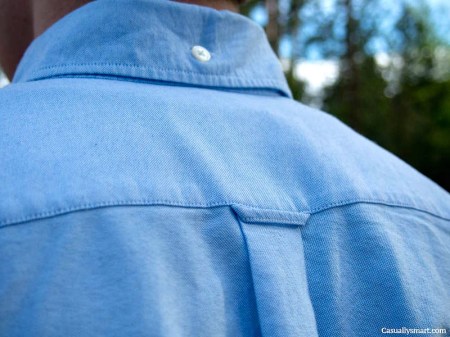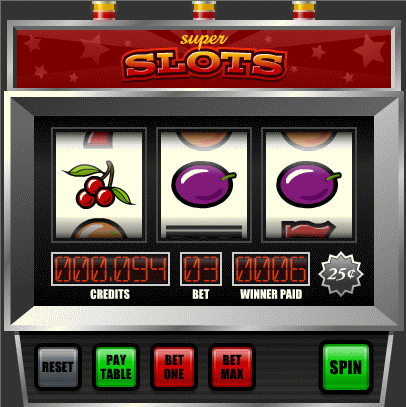My posting on breakfast cereals for kids and the way they are marketed focused on Kellogg’s Froot Loops, an extraordinarily sweet cereal in the shape of small rings (or loops), whose rhyming name was chosen to suggest, mendaciously, that the rings are made from fruit, or at least fruit juice — but in a spelling that avoids making such a claim explicitly; the spelling is not merely orthographically playful (as commercial names often are), but deliberately misleading.
Meanwhile, fruit loop came to have at least two slang senses, both distinctly North American and, apparently, neither current before (roughly) 1950: ‘a crazy or foolish person’; and, incorporating the slang slur fruit for a gay man, ‘locker loop’ (a feature of certain men’s shirts, also known slurringly as fag tag or fairy loop).
That discussion will lead tangentially to another informal use of fruit, in fruit machine, BrE corresponding to AmE slot machine.
fruit loop ‘a crazy’. This one takes off from the cereal. From NOAD2:
North American informal A crazy or foolish person. Origin 1970s: from Froot Loops, trademark for a breakfast cereal.
In combination with an allusion to the slang adjective loopy. Again from NOAD2:
informal crazy or silly: the author comes across as a bit loopy.
Not in the OED, but Green’s Dictionary of Slang has it (from Scot. loopy ‘cunning’) as orig. Naut. ‘eccentric, crazy’, with a first cite from 1921.
Locker loops and Ivy League shirts. On to some chapters in the history of men’s clothing that aren’t so easy to make out. A locker loop is a loop at the base of the yoke — a section of fabric in the upper part of the back behind the neck and over the shoulders (hang on, there will be pictures) — on an American dress shirt. The loop is intended to hang onto the lower piece of a coat hook in a locker, freeing that piece up for hanging other pieces of clothing on it:
(Commenters on locker loops sometimes point out that it’s much better for shirts to hang on proper hangers — but many lockers can’t accommodate hangers.)
A home-sewn dress shirt with a locker loop on the back:
I haven’t found a thing about when locker loops first appeared on men’s shirts.
But locker loops are part of a package that I’ll call the Ivy League shirt, since it seems to have appeared as standard dress for college men in the Ivy League (me included) in the 1950s, where it was dressy but also casual (not usually worn with a tie). The Ivy League shirt is a button-down collar (not spread collar) shirt made of Oxford cloth, prototypically blue, with a box pleat and a locker loop on the back:
The shirt went along with chinos (jeans were not yet acceptable parts of the costume) and brown loafers. After all these years, the costume remains as standard casual business dress in many settings; I see men so dressed all over the place here in Silicon Valley (except that the shirts and pants are now permanent-press, which they certainly weren’t then).
Note 1: Oxford cloth. From Wikipedia:
Oxford is a type of woven dress shirt fabric [originally in cotton], employed to make a particular casual-to-formal cloth in Oxford shirts. The Oxford weave has a basketweave structure and a lustrous aspect making it a popular fabric for a dress shirt.
Note 2: button-down collars. From Wikipedia:
Button-down collars [vs. spread collars] have points fastened down by buttons on the front of the shirt [with a third button on the back of the collar]. Introduced by Brooks Brothers in 1896, they were patterned after the shirts of polo players and were used exclusively on sports shirts until the 1950s in America.
And so we get the Ivy League shirt of my young adulthood, which then diffused to adolescents (on a path I know little about), where they still carried class associations — possibly the result of mothers buying Ivy League shirts for their sons in middle school and high school, as “nice” and “classy”. (The shirt in #2 seems to have been sewn by a mother for her son. The locker loop is its only Ivy-League feature: it’s not Oxford cloth, not button-down, not blue, and it lacks the box pleats.)
(I used to have a pile of Ivy League shirts. The dress shirts in my closet now are not Oxford cloth and have neither box pleats nor locker loops.)
For the next development, the class associations of Ivy League shirts seem to have been important: they were apparently seen by many kids as “snooty” and “fancy”, not “regular-guy” wear, hence potentially as faggy. This resulted in a kind of adolescent gay-denial assault (starting in the 1950s but continuing at least into the 1990s) on the most peculiar feature of the shirts, their locker loops. Boys “taught a lesson to” other boys by ripping the loops off, and tried to protect themselves from accusations of homosexuality by cutting them off on their own clothes — actions that seem to have distressed quite a few mothers.
The linguistic assault on locker loops. From a poster to Straight Dope in 2006:
Back in the 70″s in high school we gleefully tore off the cloth loops from the yoke of guys’ dress shirts. They were impolitely called fruit loops.
Another poster recalled the name from the 50s and 60s. From still another:
In high school in the late 90’s, several young teens (mostly male) referred to them as “fag tags”, which would basically be the same intent as fruit loop.
Still another: “We called ’em fag tags in the ’60s as well” and still another: “Southeastern Massachusetts, 1960s, fairy loops”.
So, a pile-up of sexuality insults: fruit, fairy, fag. Fag I’ve looked at before on this blog, at some length, and (more briefly) fairy as well, but I think fruit is new here (not that it’s not long familiar to me). More on it shortly. But first a note about timing: what do Froot Loops and homophobic fruit loops have to do with one another?
The short answer would appear to be: at least in the early days, nothing at all: the cereal name (which is entirely explicable as a combination of a modified spelling for fruit and the rhyming loops ‘rings, circles’) appeared in 1962, and early reports of homophobic fruit loops go back to the 1950s. Unfortunately, people’s recollections of what they said at certain times in the past are famously unreliable; they need to be backed up by actual attestations (in their cultural context).
In this case, I’m inclined to believe that the homophobic label is an independent innovation of a rhyming expression combining the existing slur fruit with loop referring to the object by virtue of its appearance and possibly building on locker loop. (Compare homophobic fag tag.) But then its use would eventually be facilitated and reinforced by the cereal name.
The slur fruit. An overview from Wikipedia:
Fruit and fruitcake, as well as many variations, are slang or even sexual slang terms which have various origins but modern usage tend to primarily refer to gay men and sometimes other LGBT people. Usually used as pejoratives, the terms have also been re-appropriated as insider terms of endearment within LGBT communities. Many modern pop culture references within the gay nightlife like “Fruit Machine” and “Fruit Packers” have been appropriated for reclaiming usage, similar to queer and dyke.
… In Polari [orig. 19th century British gay slang], fruit means queen, which at the time and still today is a term for gay men and can be used positively or negatively depending on the speaker, usage and intent.
Several origins of the word fruit being used to describe gay men are possible, and most stem from the linguistic concepts of insulting a man by comparing him to or calling him a woman [especially via the sense ‘prostitute’].
(Contrast nutty as a fruitcake ‘really crazy’, which has fruitcake in it because fruicakes contain nuts (as well as fruits).)
OED2 takes a different view, based on criminal usage. It has fruit, glossed as ‘a dupe, an ‘easy mark’ (from 1895 on) and from it, possibly, ‘a male homosexual’ as slang (orig. U.S.), attested from 1935, in a dictionary of underworld and prison slang, with other cites from 1957, 1970, and 1971.
Gambling machines. Now for something truly tangential. From Wikipedia:
A slot machine (American English), informally fruit machine (British English), puggy (Scottish English slang), the slots (Canadian and American English), poker machine (or pokies in slang) (Australian English and New Zealand English) or simply slot (American English), is a casino gambling machine with three or more reels which spin when a button is pushed. Slot machines are also known as one-armed bandits because they were originally operated by one lever on the side of the machine as opposed to a button on the front panel, and because of their ability to leave the gamer impoverished. Many modern machines are still equipped with a legacy lever in addition to the button. A gambler strategically operating multiple machines in order to draw the highest possible profits is called a multi-armed bandit.
Slot machines include a currency detector that validates the money inserted to play. The machine pays off based on patterns of symbols visible on the front of the machine when it stops. Modern computer technology has resulted in variations on the slot machine concept. Slot machines are the most popular gambling method in casinos and constitute about 70 percent of the average US casino’s income.
Very common symbols on slot machines are in fact fruits, which is where the British slang comes from:
(No payoff, since the three symbols don’t match.)




June 28, 2016 at 12:20 am |
[…] via arnoldzwicky […]
August 1, 2018 at 10:30 am |
[…] Arnold Zwicky’s Blog […]